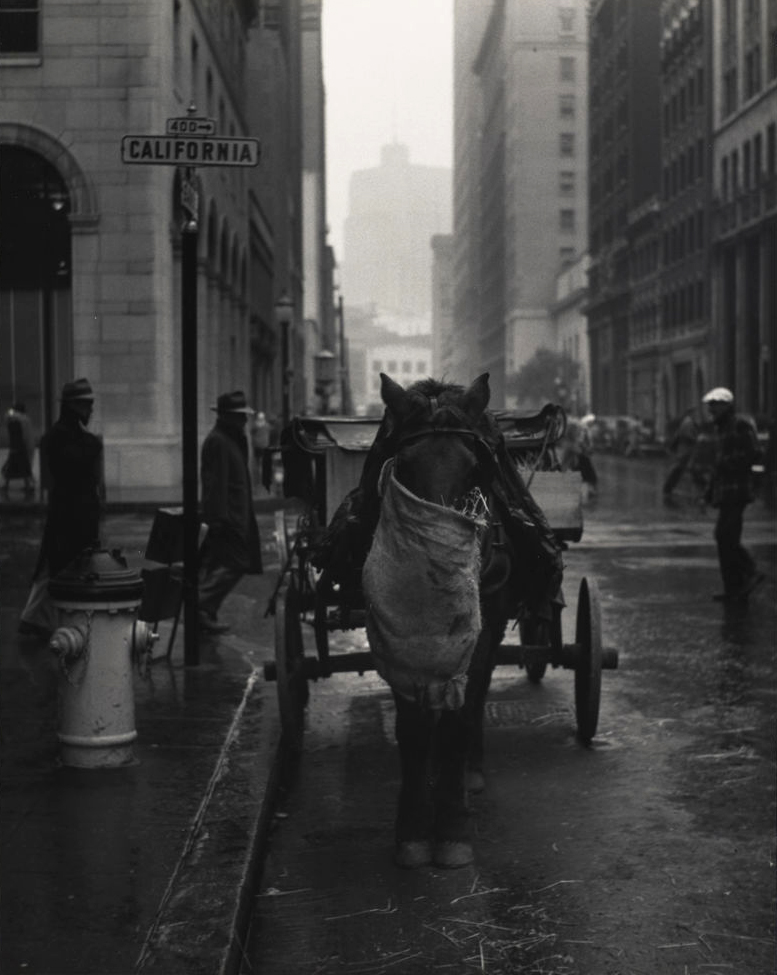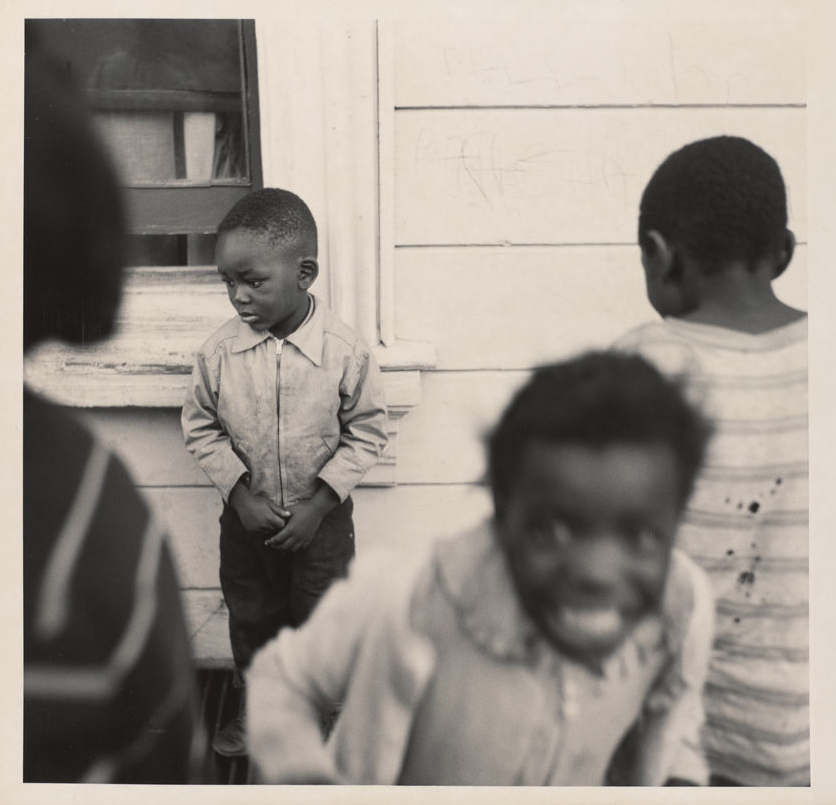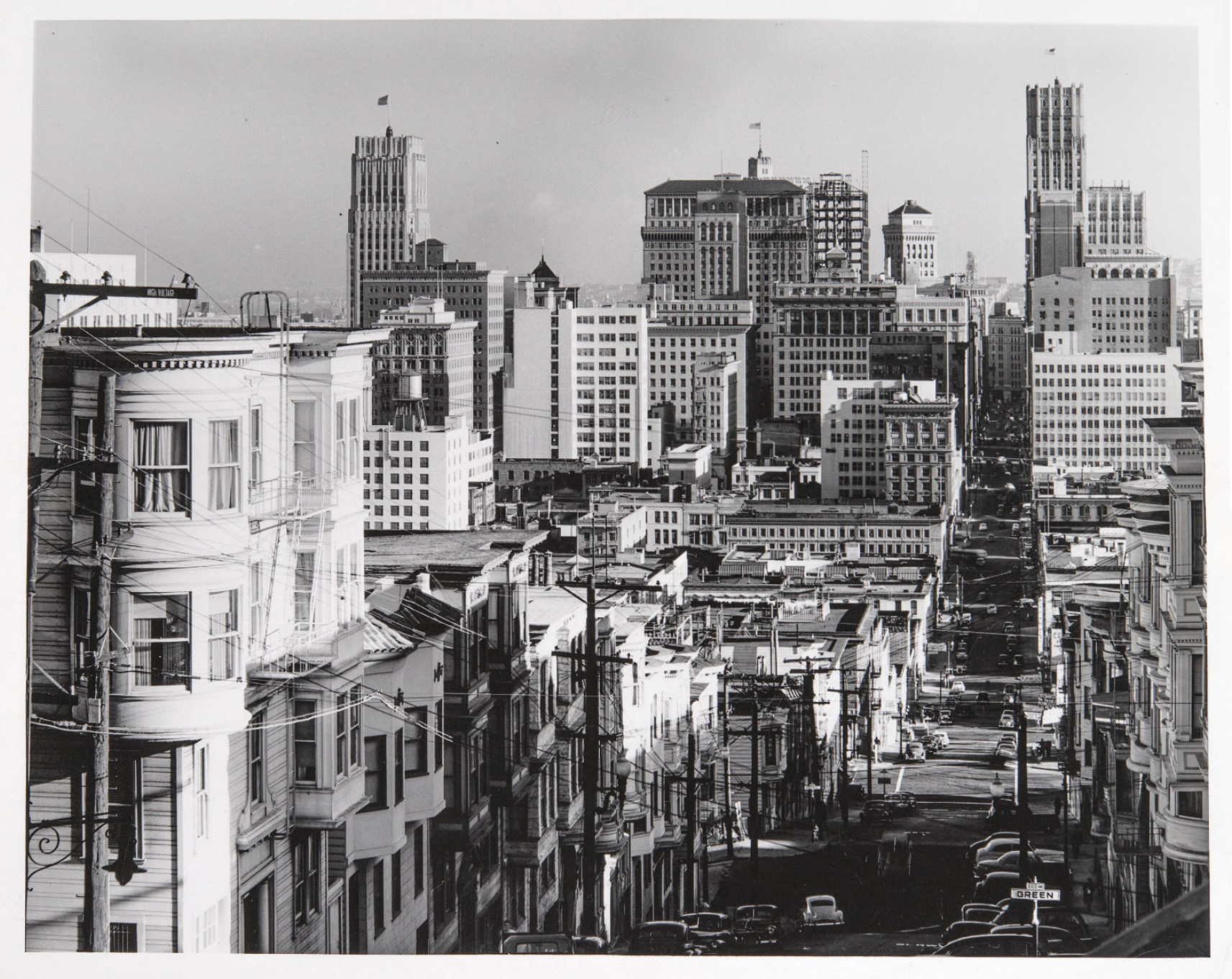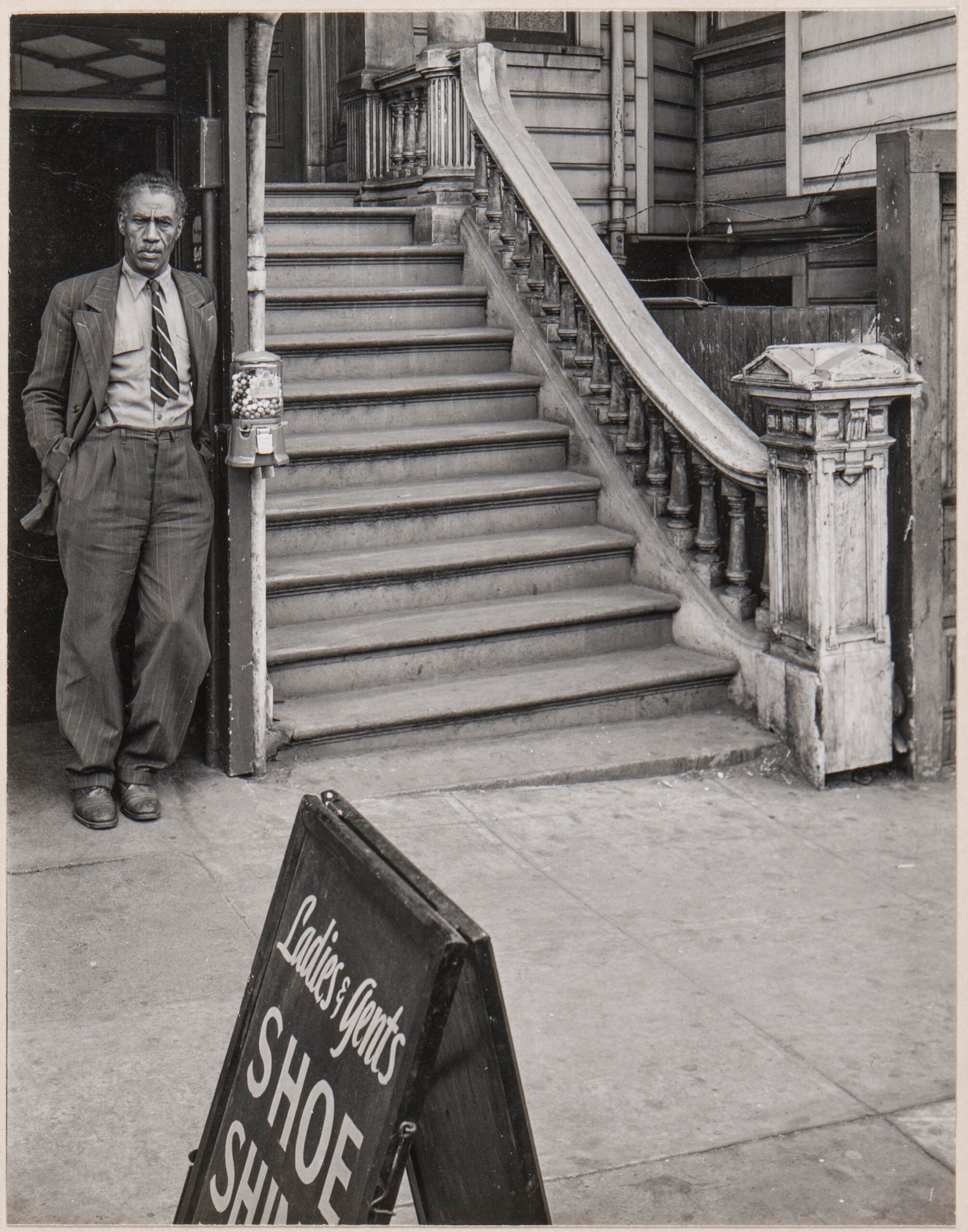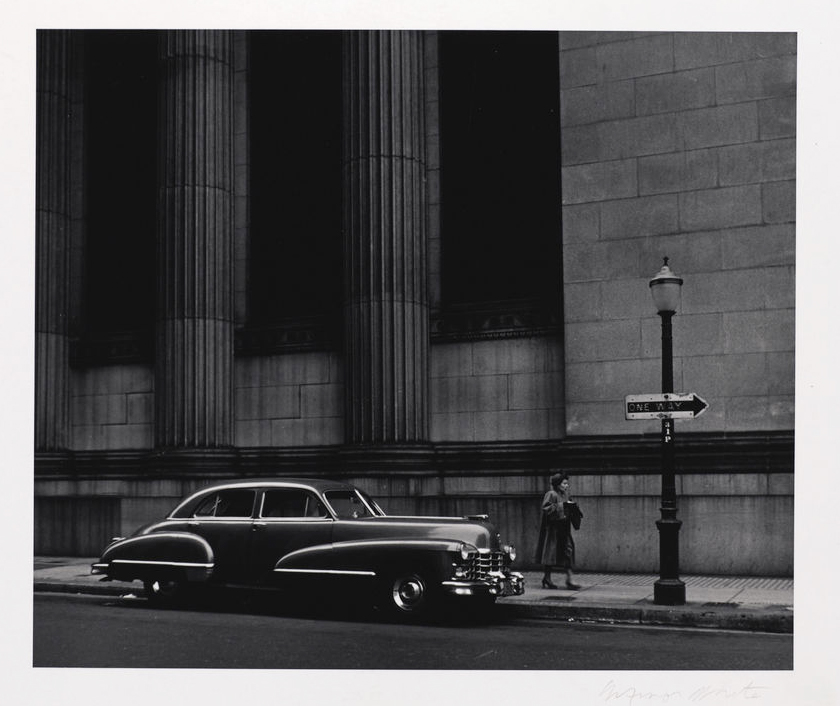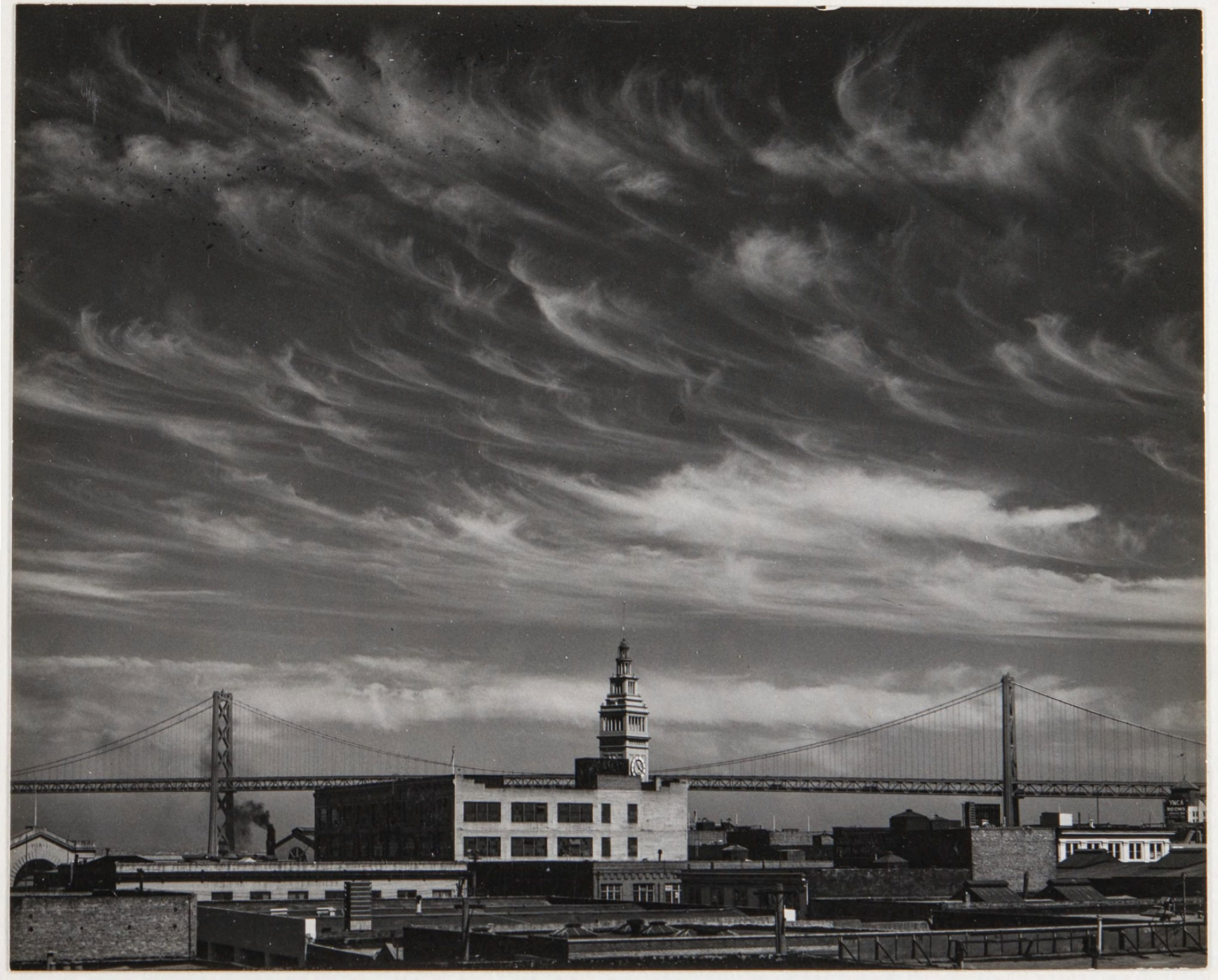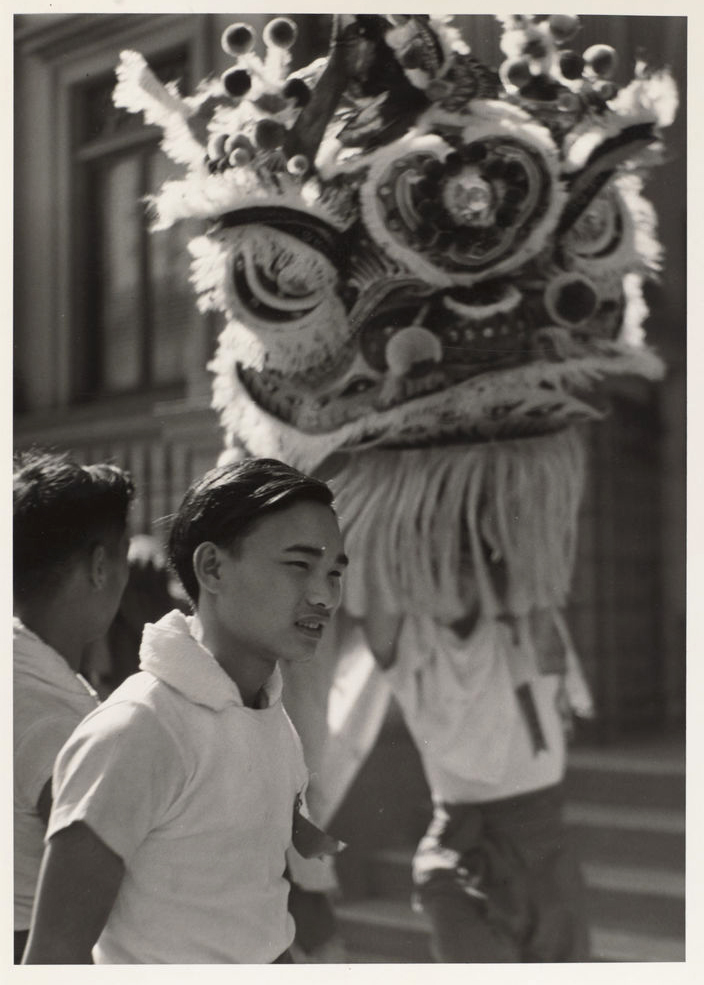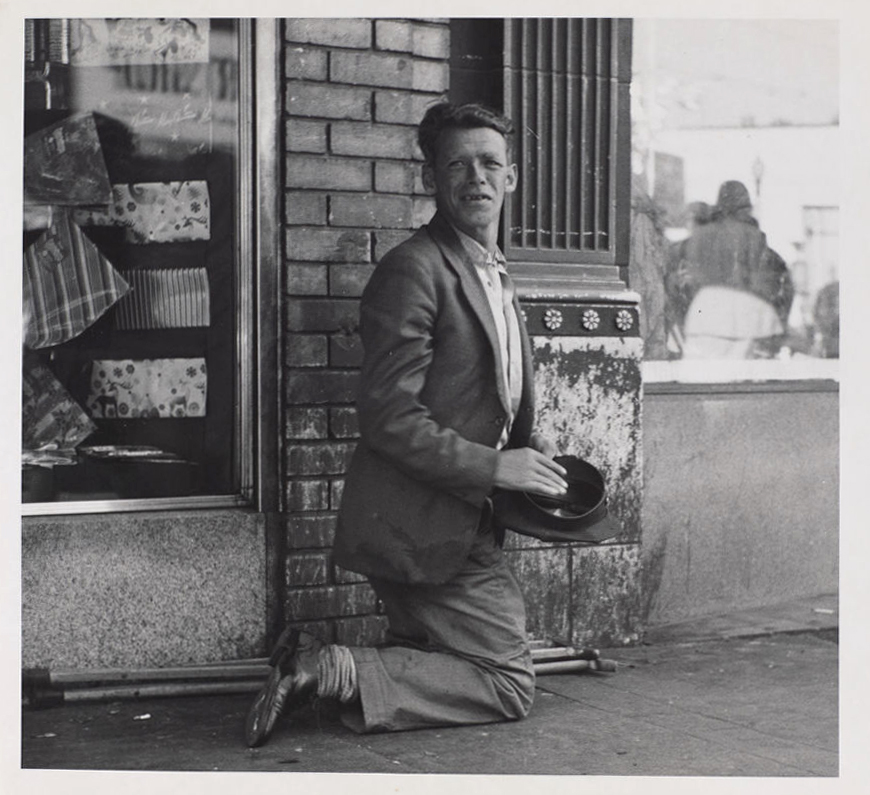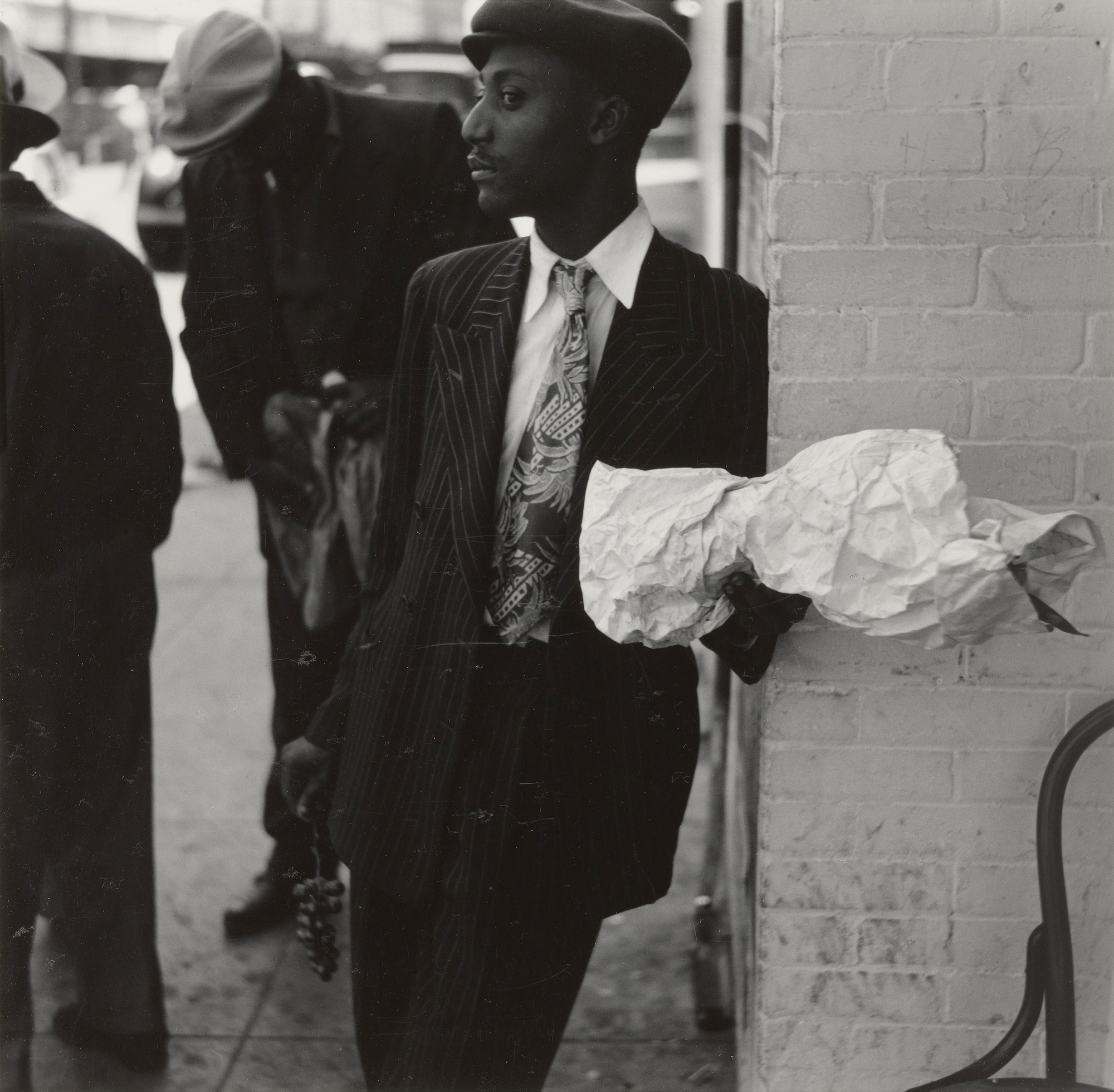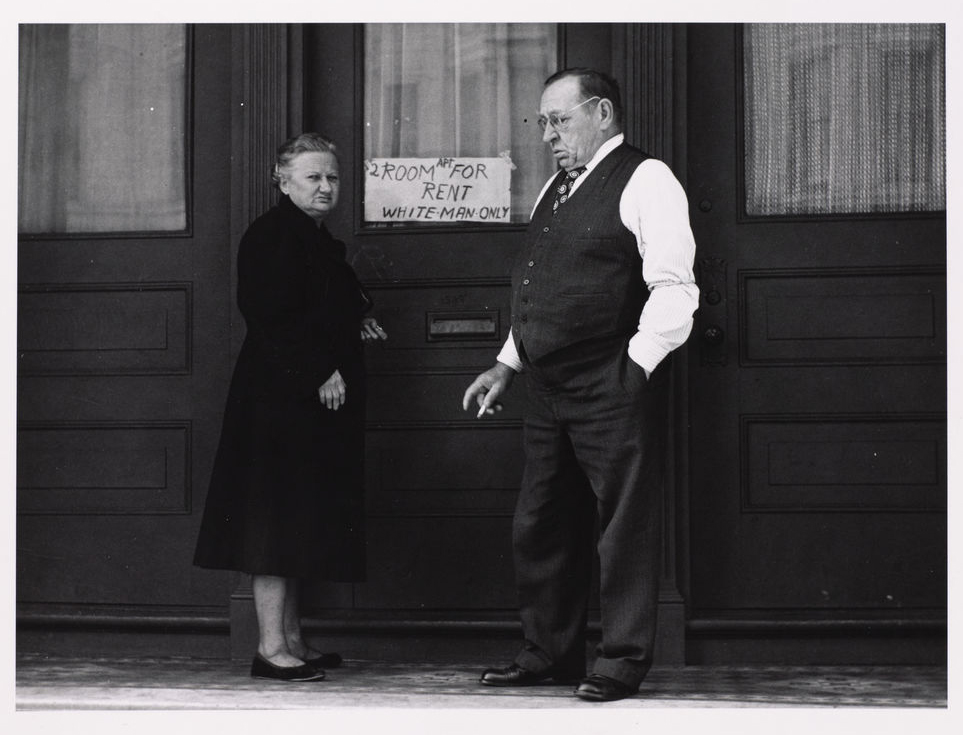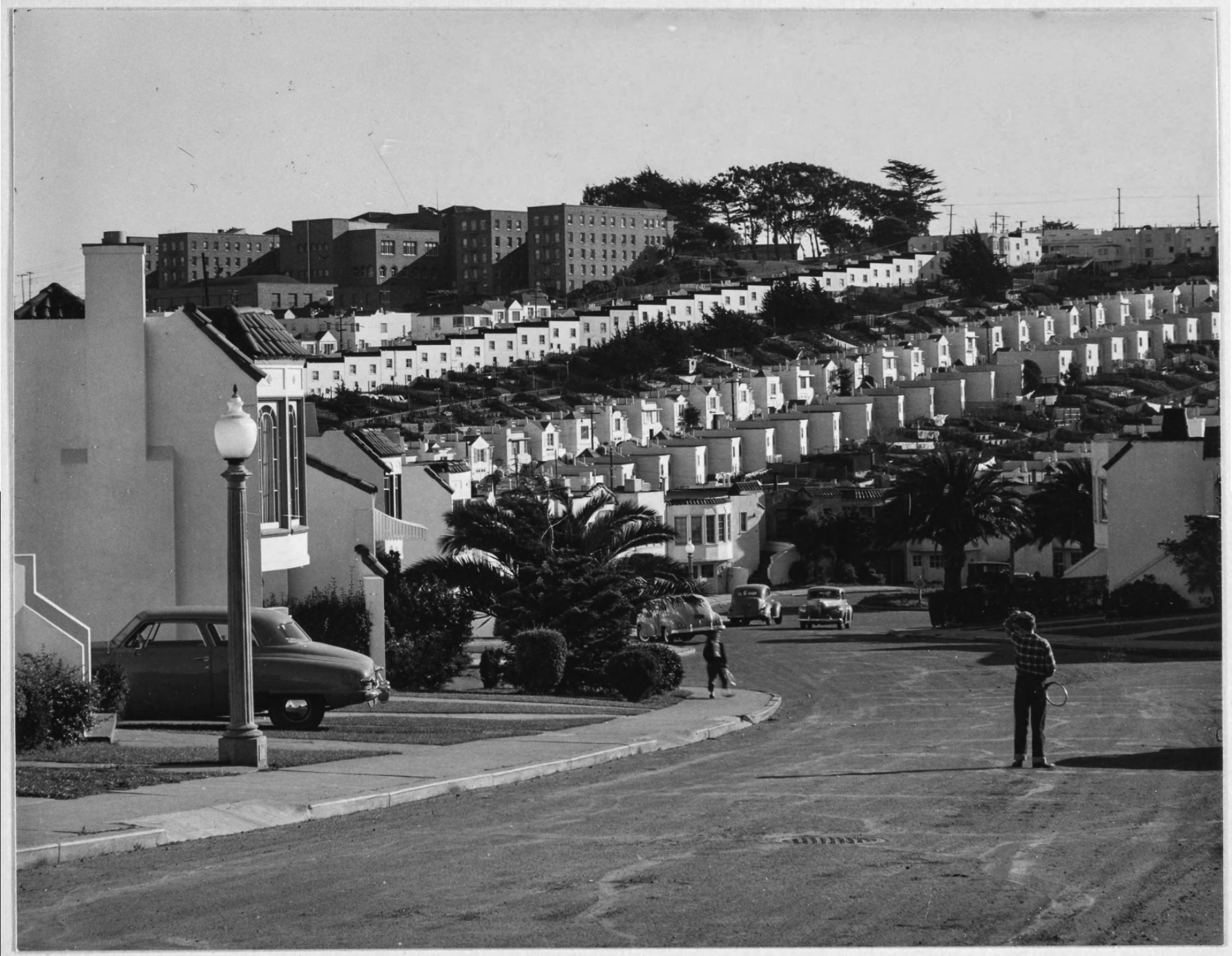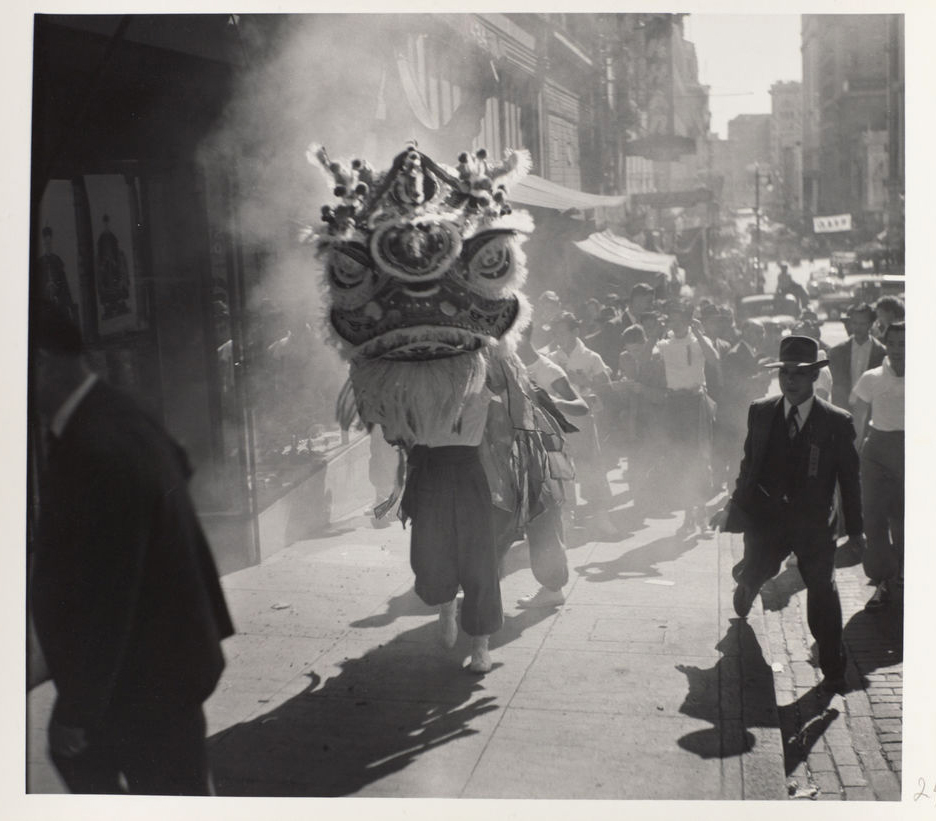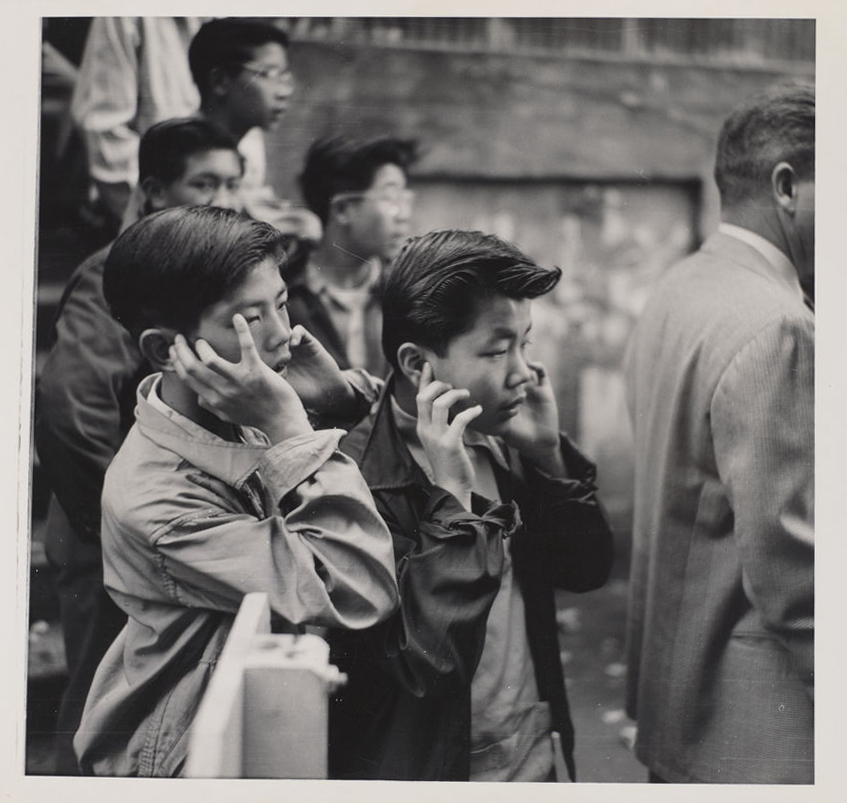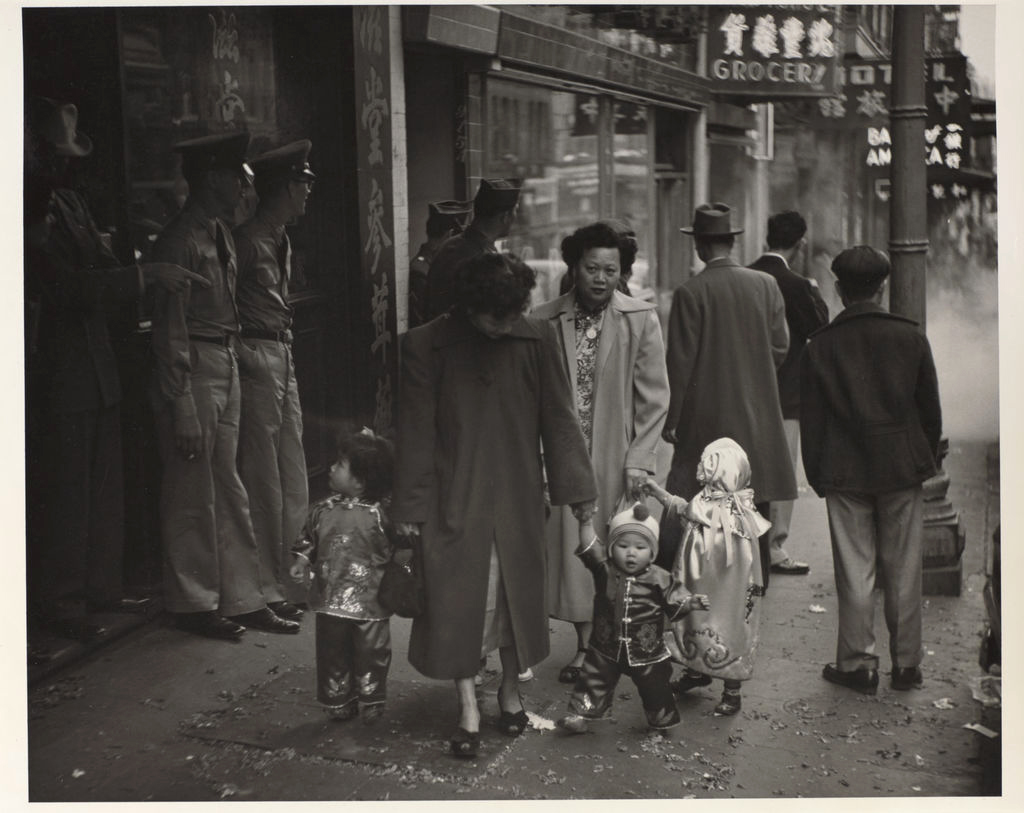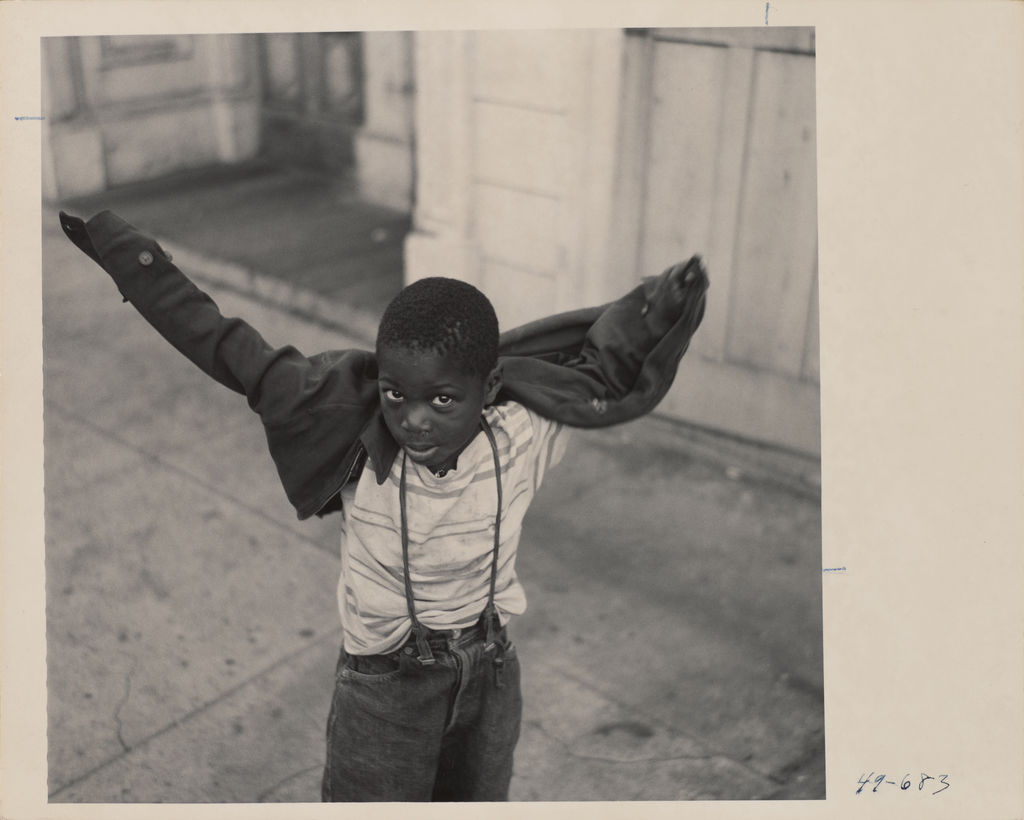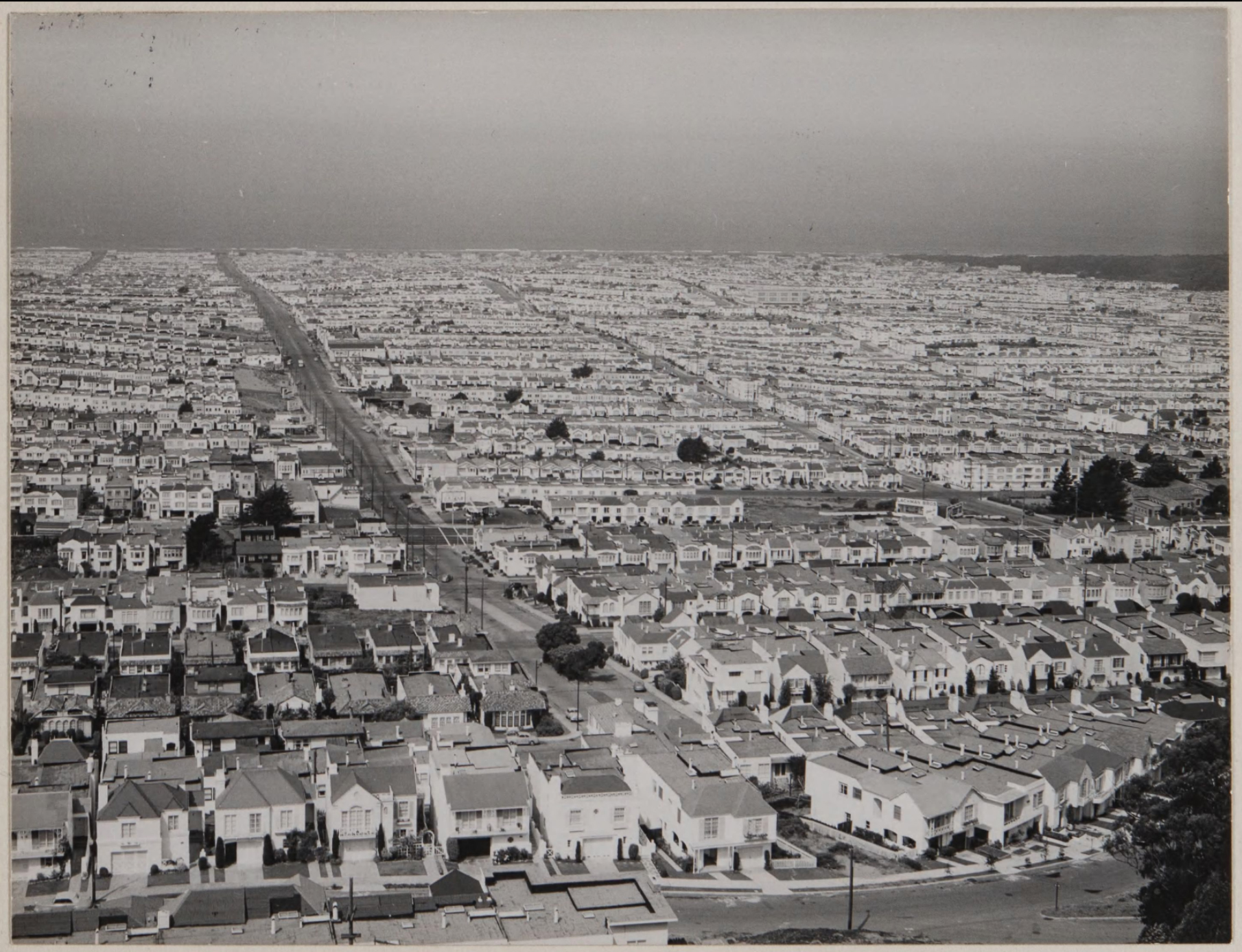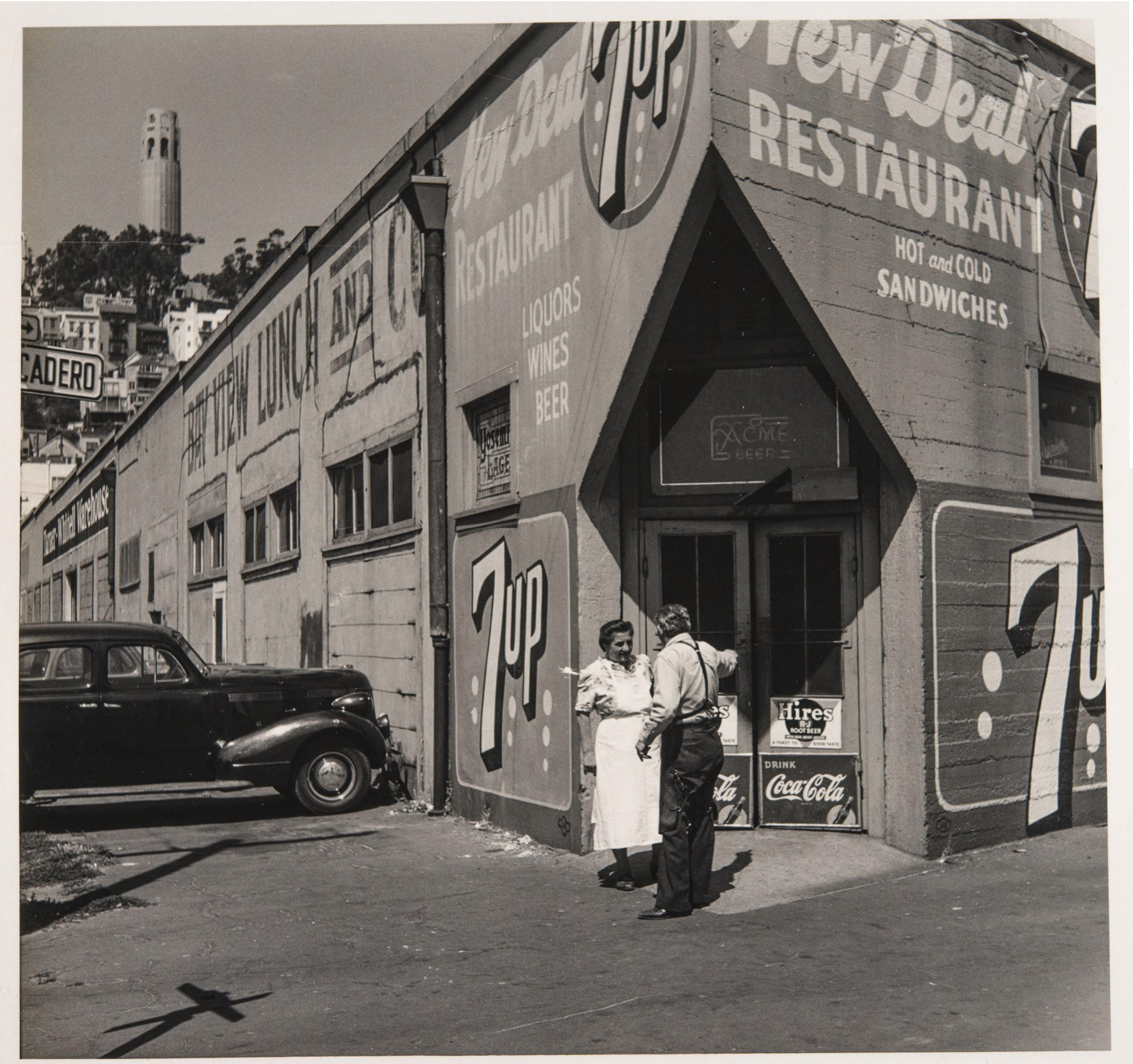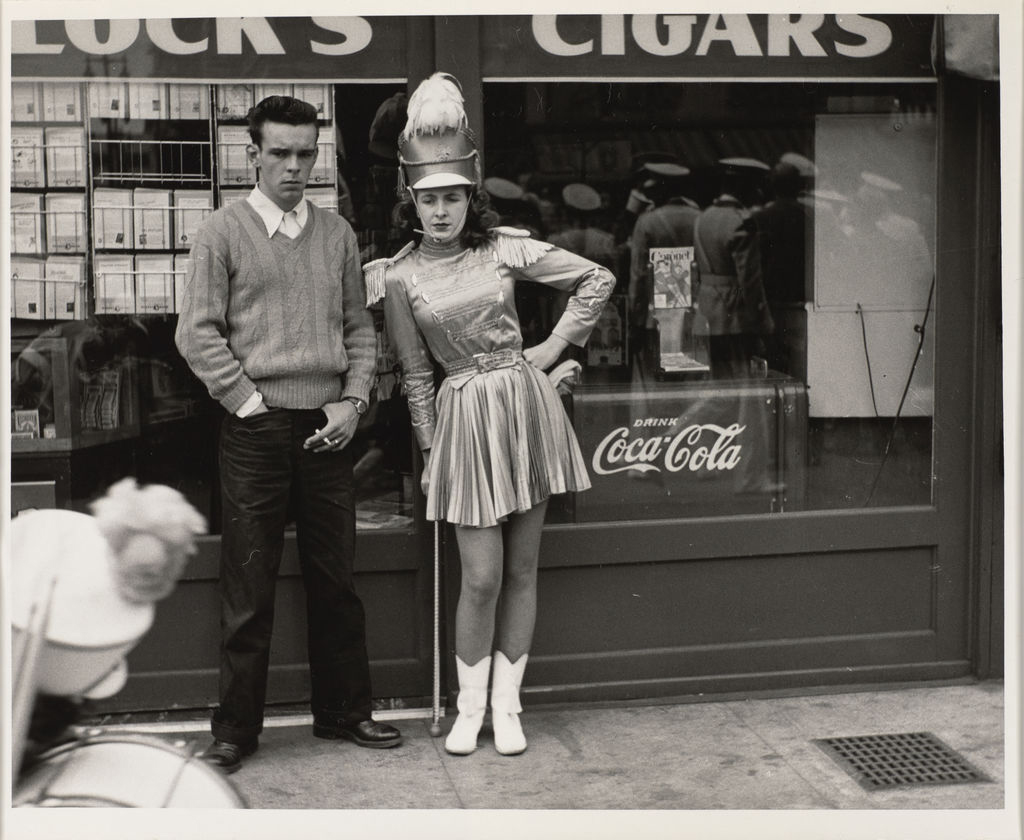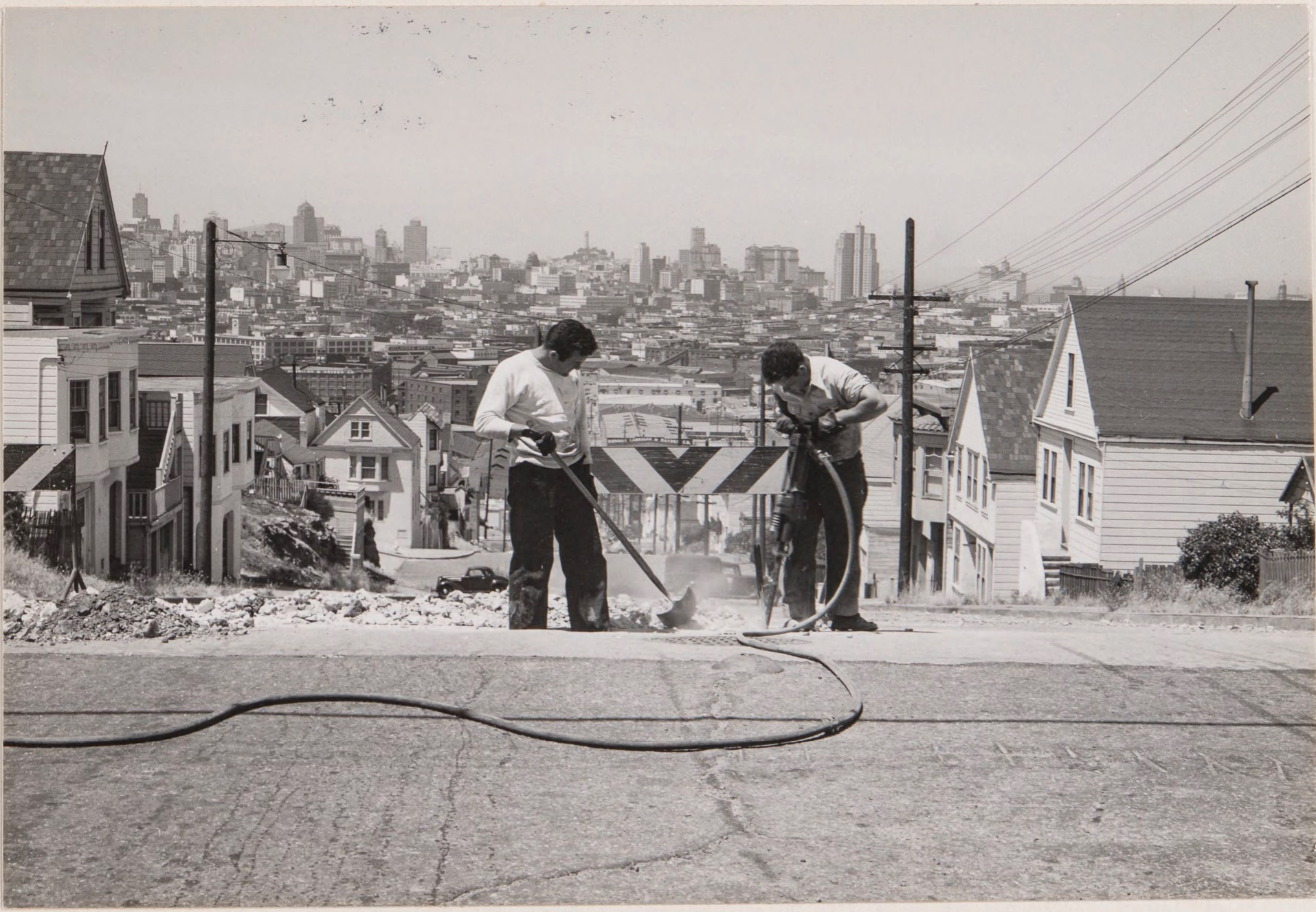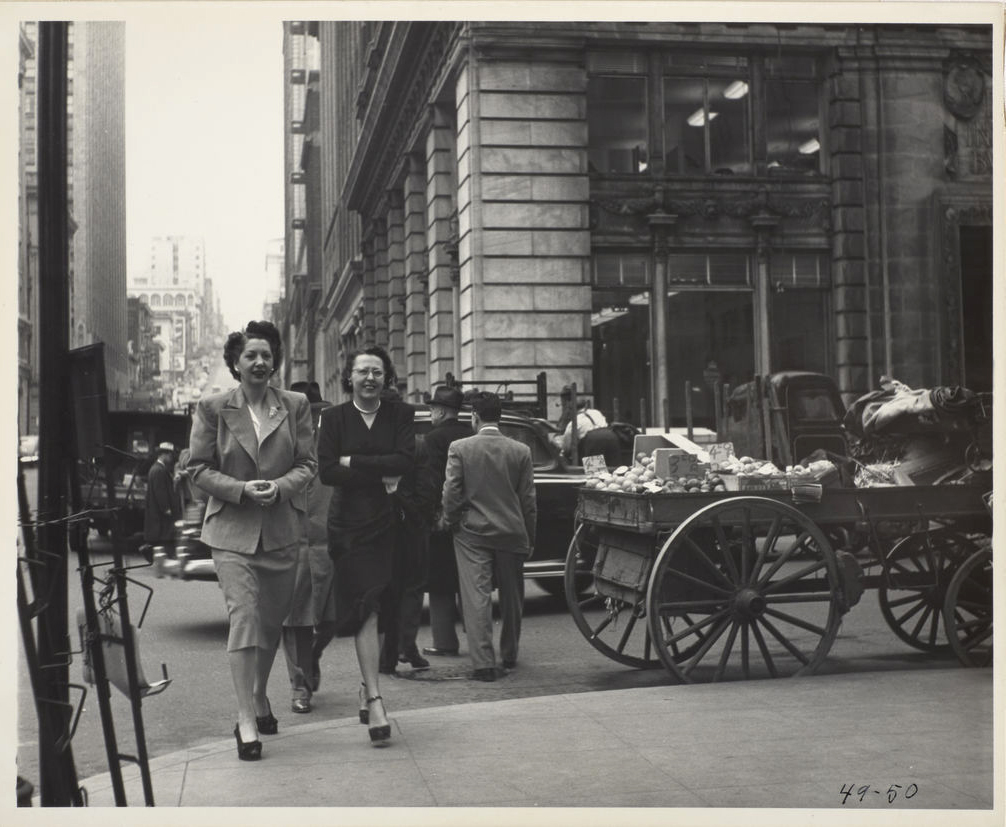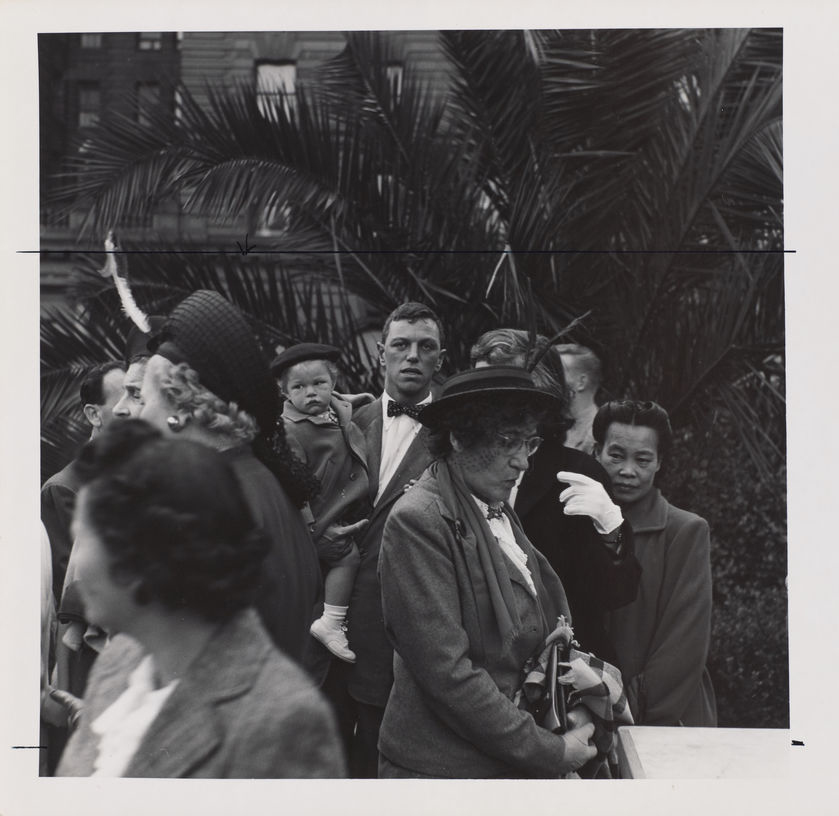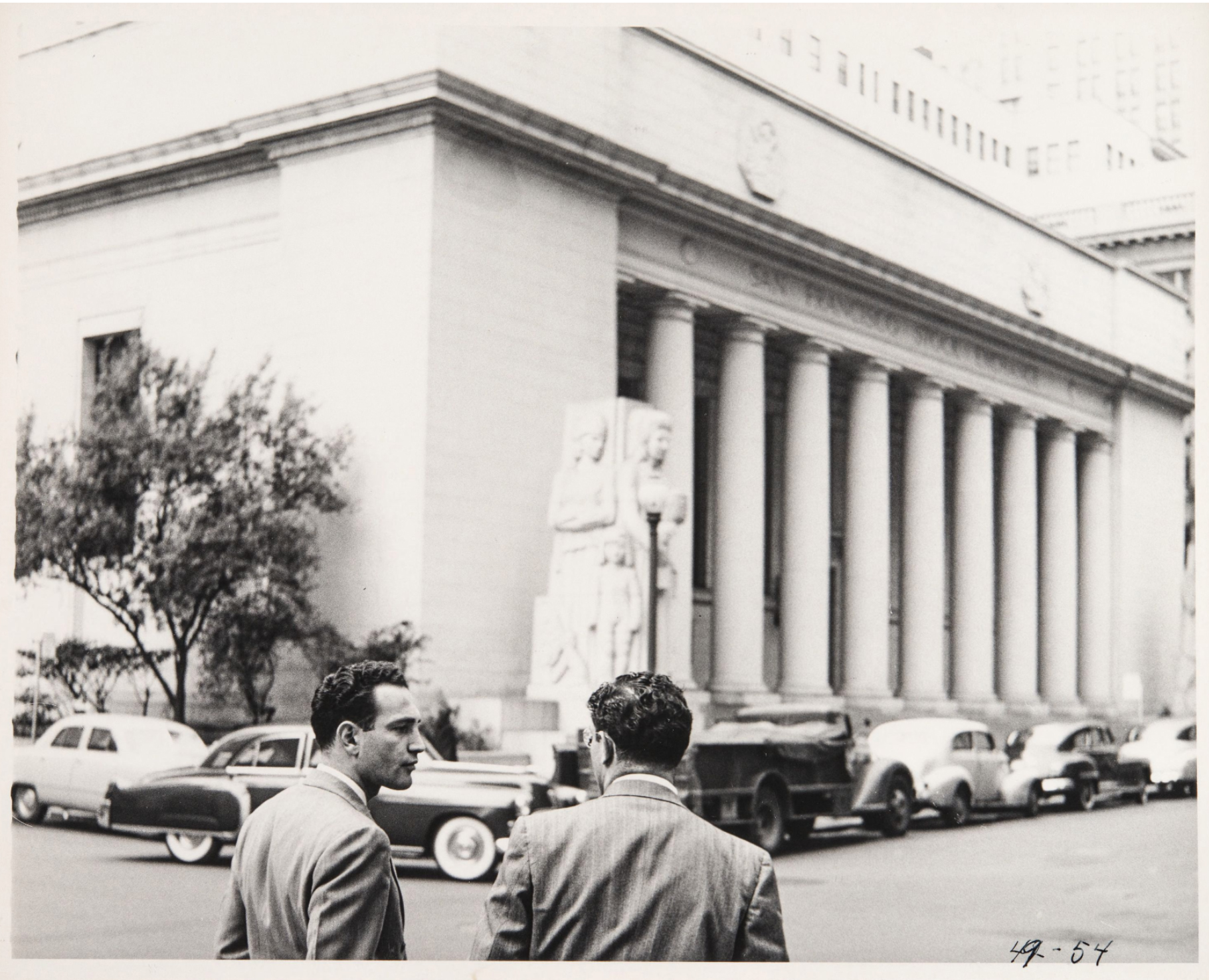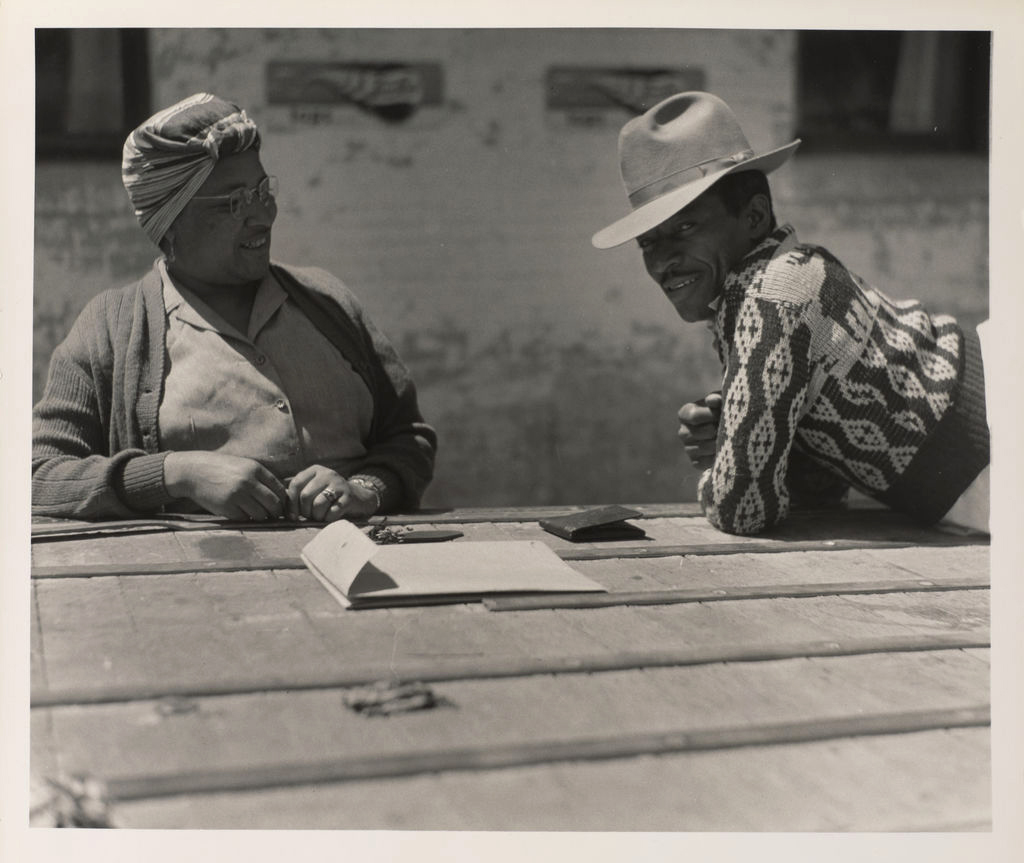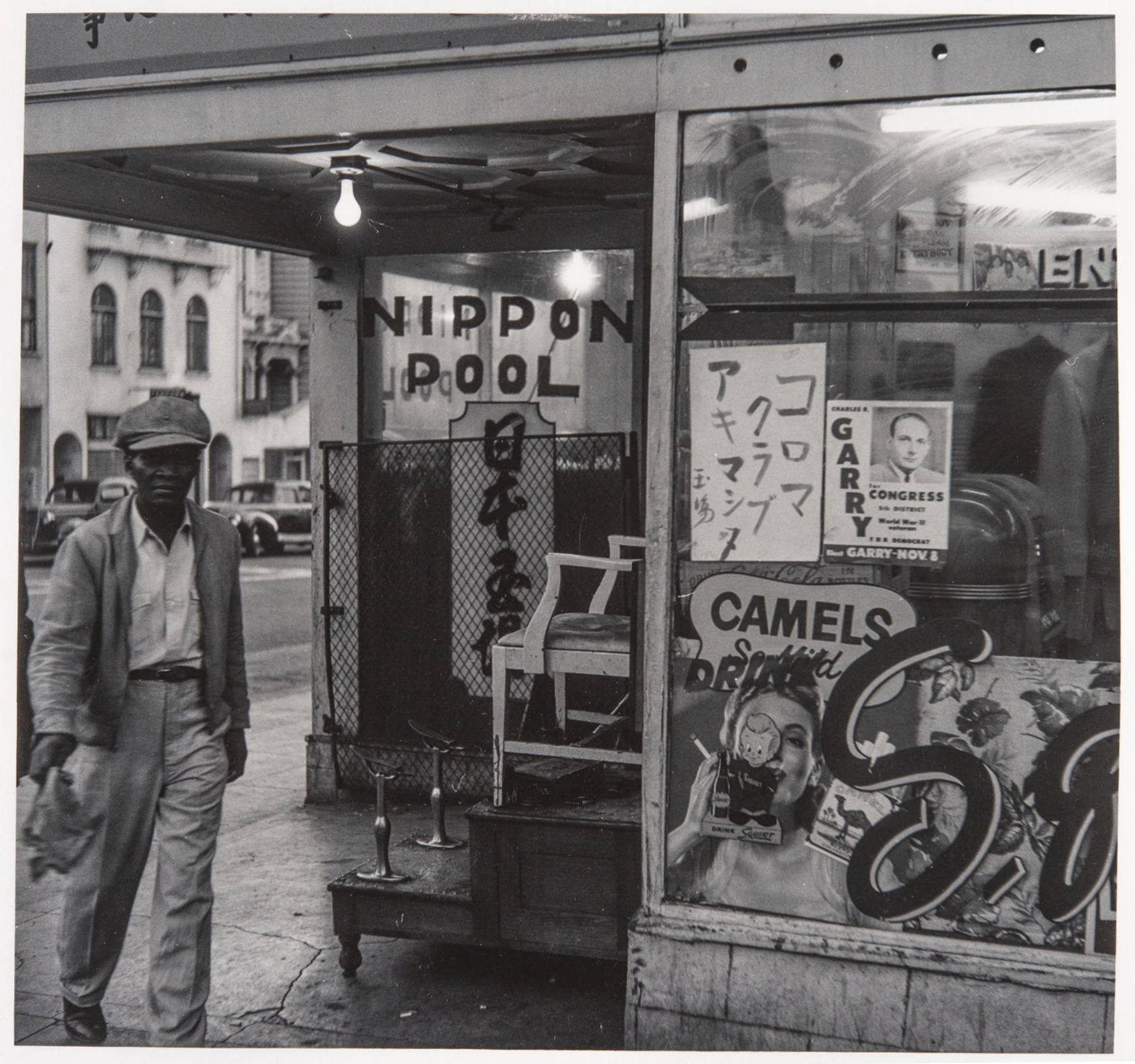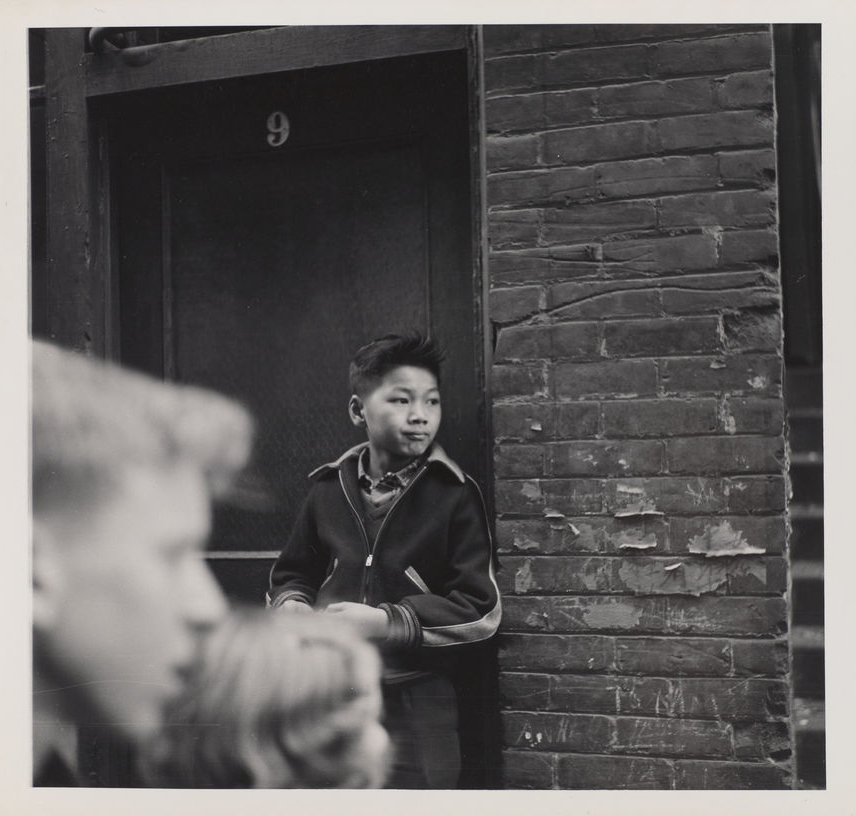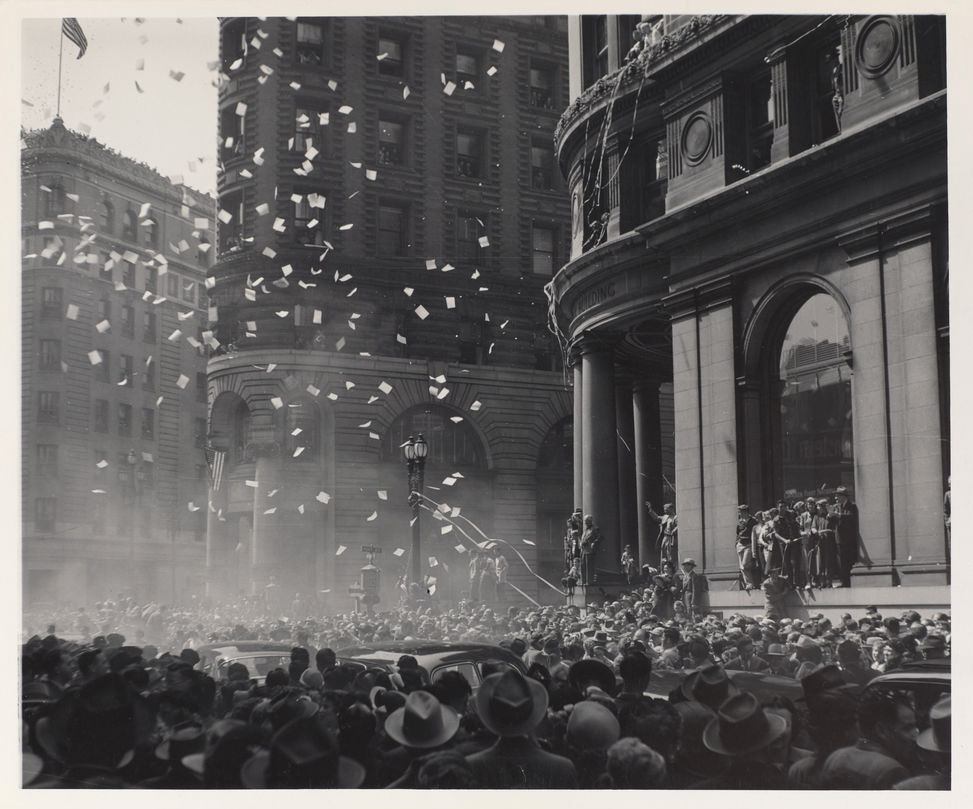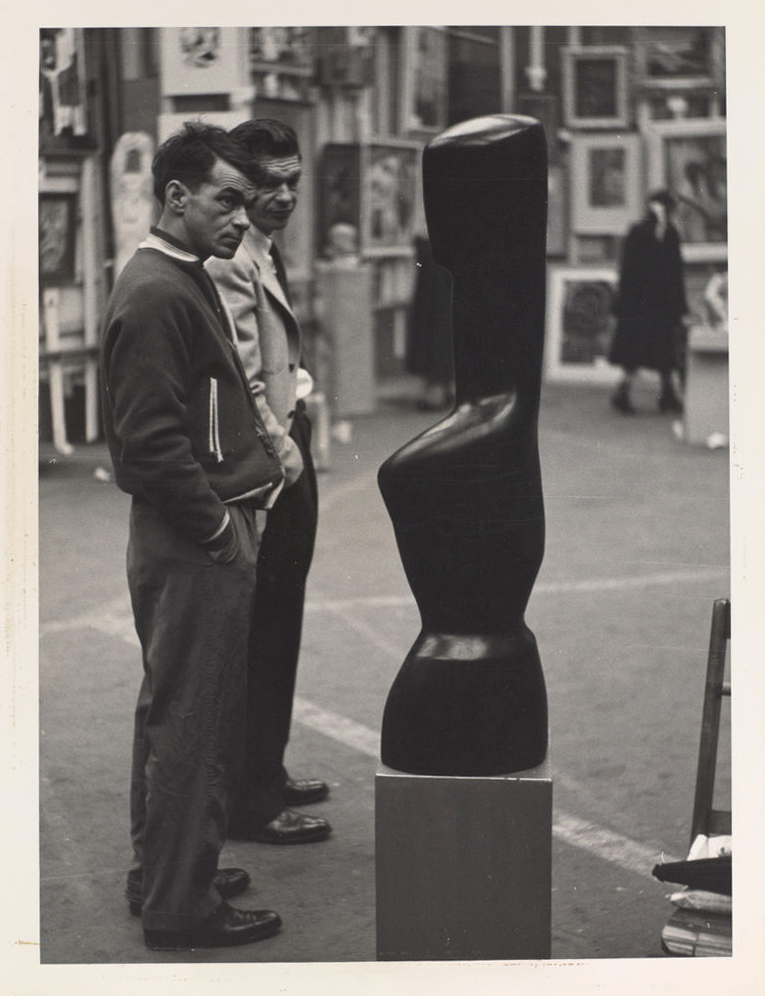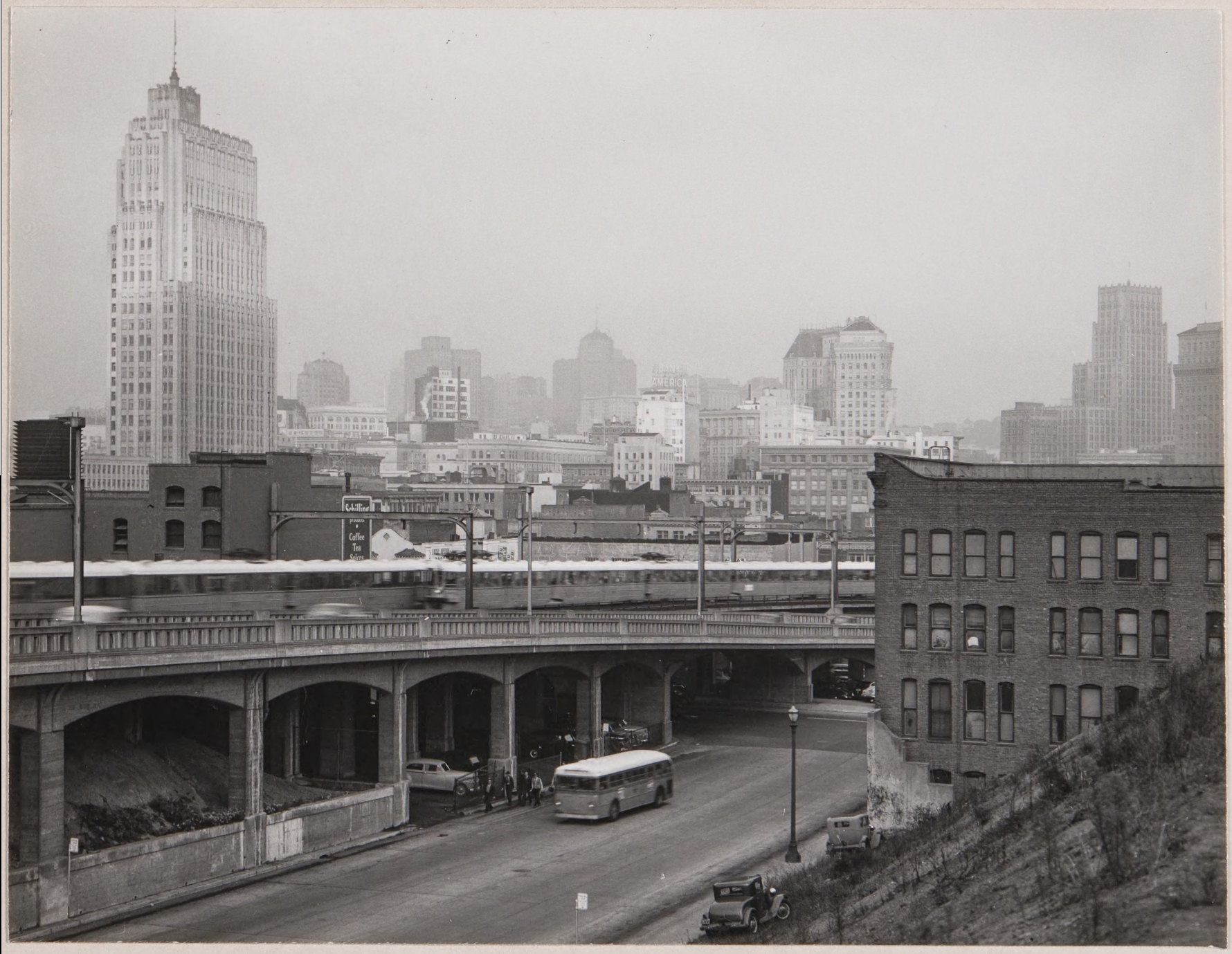"Fog, looking toward Twin Peaks, San Francisco," 1951. Minor White/Princeton University Art Museum
Minor White’s San Francisco: evocative pictures of a vanishing city
The photographer Minor White came to San Francisco in 1946 at a moment of immense change.
The war was over, and thousands of veterans like White were settling down, transforming the city from a town of charming Victorians into a fully modern metropolis. The Tonga Room had just opened. The city’s post-war social movements — the Beat generation and the hippies later — were still years away.
For the photographer, this was the early stage of a career spent mostly on the East Coast that would inspire some to call him the “spiritual leader” of modern photography before his death in 1976.
But archivists and photography admirers keep coming back to White’s work in San Francisco, which captured the city’s vulnerable moments. Distinguishing himself from contemporaries such as Ansel Adams and Edward Weston, who are known more for their work with often stark landscapes, White has been celebrated for images that elevate the human experience.
His mission — to capture the essence of the city, from corner to corner — yielded thousands of black-and-white photographs of a place that will be both familiar and alien to modern residents.
He shot beggars, policemen, and art being sold on the street. Children, working men and women, and San Francisco’s upper class parading around town with their coats and smokes. The city’s regal architecture too, and natural landscapes in the state like Point Lobos, part of a personalized practice that White said combined the sacred and the scientific.
“He had a mystical vision you could read the surface of a building like you could read the surface of a face,” said Todd Cronan, professor of art history at Emory University. “A social vision that things are alive and animate and readable.”
The San Francisco in White’s eye was timeless, a place of transformation where tradition is overlaid with layers of modernity.
“In his photos, we see ramshackle Victorian buildings right next to brand new highway overpasses,” said Erin Garcia, a director at the California Historical Society. “He shows us a way of looking at the city that appreciates both the old and the new.”
Garcia said White showed how “to maybe not romanticize the new city or sentimentalize the old city. To be an observer or witness and not to worry about it too much.”
The Princeton University Art Museum houses the most significant archive of Minor White’s work. The California Sun combed through more than 1,600 images from his San Francisco period for the selection of 31 pictures below.
“Sansome and Pine Streets, San Francisco,” 1949.
Minor White/Princeton University Art Museum
“Sansome and California Streets, San Francisco,” 1949.
Minor White/Princeton University Art Museum
“Fillmore District, San Francisco,” 1949.
Minor White/Princeton University Art Museum
“Montgomery or Powell Street at Green Street, San Francisco,” circa 1950.
Minor White/Princeton University Art Museum
“San Francisco,” 1949.
Minor White/Princeton University Art Museum
“Elks’ Shoe Shine Parlor, 1535 1/2 Geary Boulevard, San Francisco,” 1948.
Minor White/Princeton University Art Museum
“Car + Bank (San Francisco),” 1949.
Minor White/Princeton University Art Museum
“Ferry Building, San Francisco,” 1951.
Minor White/Princeton University Art Museum
“Chinatown, San Francisco,” 1953.
Minor White/Princeton University Art Museum
“San Francisco,” 1949.
Minor White/Princeton University Art Museum
“Produce Market, San Francisco,” 1949.
Minor White/Princeton University Art Museum
“Fillmore District, San Francisco,” 1949.
Minor White/Princeton University Art Museum
“Justin Drive and Murray Street, San Francisco,” 1950.
Minor White/Princeton University Art Museum
“Chinatown, San Francisco,” 1953.
Minor White/Princeton University Art Museum
“Chinatown, San Francisco,” 1950.
Minor White/Princeton University Art Museum
“Year of the Dragon, Chinese New Year (Chinatown, San Francisco),” 1953.
Minor White/Princeton University Art Museum
“Fillmore District, San Francisco,” 1949.
Minor White/Princeton University Art Museum
“San Francisco,” 1949.
Minor White/Princeton University Art Museum
“Sunset district, looking west toward the Pacific Ocean, San Francisco,” 1949.
Minor White/Princeton University Art Museum
“Embarcadero North, New Deal Restaurant, Filbert Street at the Embarcadero, San Francisco,” 1949.
Minor White/Princeton University Art Museum
“San Francisco,” 1949,
Minor White/Princeton University Art Museum
“Street repairs, Potrero Hill, San Francisco,” 1949.
Minor White/Princeton University Art Museum
“Sansome and Pine Streets, San Francisco,” 1949.
Minor White/Princeton University Art Museum
“San Francisco,” 1949.
Minor White/Princeton University Art Museum
“Financial district, Sansome and Pine Street, San Francisco,” 1949.
Minor White/Princeton University Art Museum
“San Francisco,” 1949.
Minor White/Princeton University Art Museum
“Nippon Pool Hall, 1700 Post Street, San Francisco,” 1949.
Minor White/Princeton University Art Museum
“Chinatown, San Francisco,” 1950.
Minor White/Princeton University Art Museum
“San Francisco,” 1951.
Minor White/Princeton University Art Museum
“San Francisco,” 1950.
Minor White/Princeton University Art Museum
“Essex and Folsom Streets, San Francisco,” 1948.
Minor White/Princeton University Art Museum
This article is from the California Sun, a newsletter that delivers must-read stories to your inbox each morning . Sign up here.
Get your daily dose of the Golden State.

